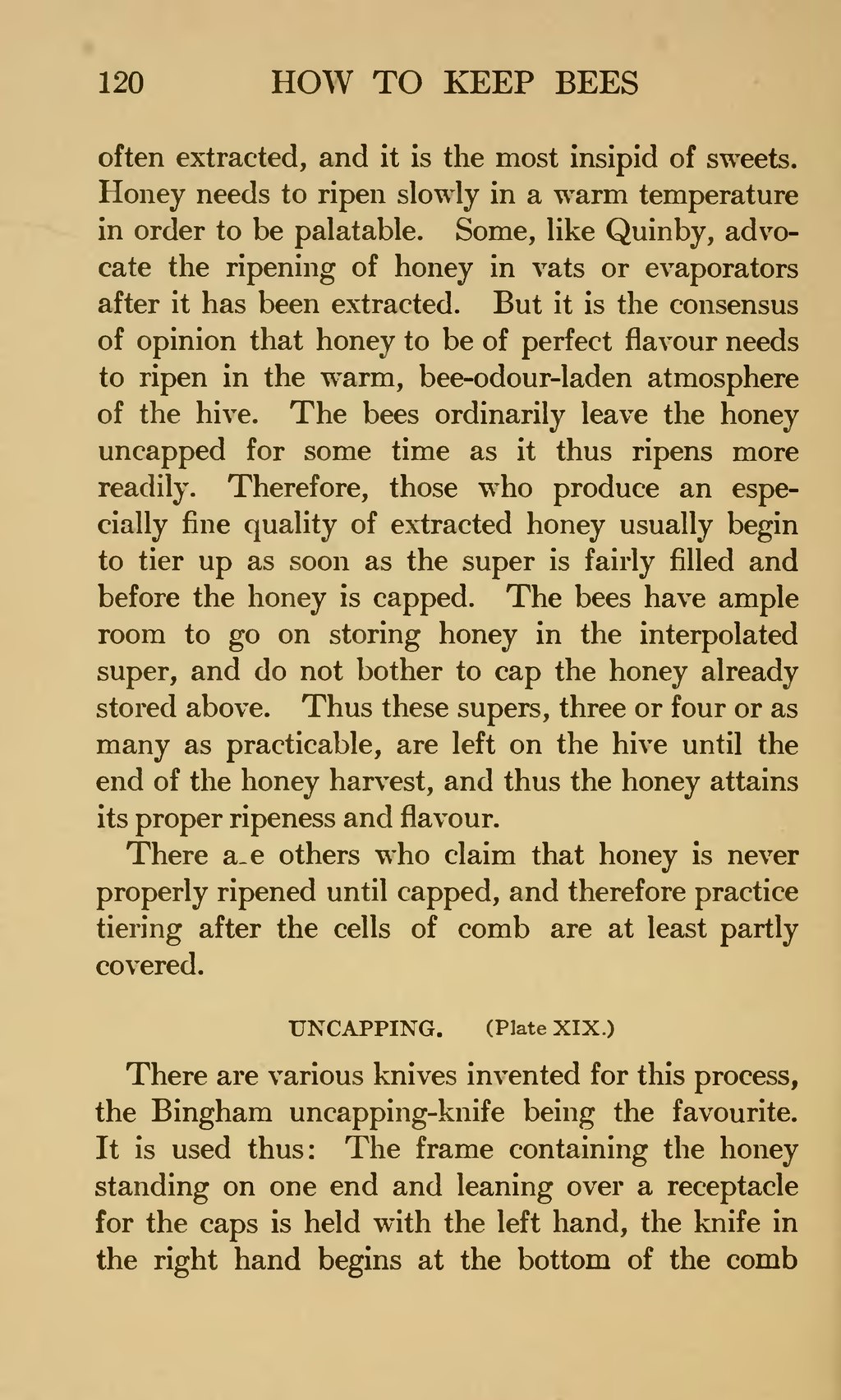often extracted, and it is the most insipid of sweets. Honey needs to ripen slowly in a warm temperature in order to be palatable. Some, like Quinby, advocate the ripening of honey in vats or evaporators after it has been extracted. But it is the consensus of opinion that honey to be of perfect flavour needs to ripen in the warm, bee-odour-laden atmosphere of the hive. The bees ordinarily leave the honey uncapped for some time as it thus ripens more readily. Therefore, those who produce an especially fine quality of extracted honey usually begin to tier up as soon as the super is fairly filled and before the honey is capped. The bees have ample room to go on storing honey in the interpolated super, and do not bother to cap the honey already stored above. Thus these supers, three or four or as many as practicable, are left on the hive until the end of the honey harvest, and thus the honey attains its proper ripeness and flavour.
There are others who claim that honey is never properly ripened until capped, and therefore practice tiering after the cells of comb are at least partly covered.
UNCAPPING. (Plate XIX.)
There are various knives invented for this process, the Bingham uncapping-knife being the favourite. It is used thus: The frame containing the honey standing on one end and leaning over a receptacle for the caps is held with the left hand, the knife in the right hand begins at the bottom of the comb
